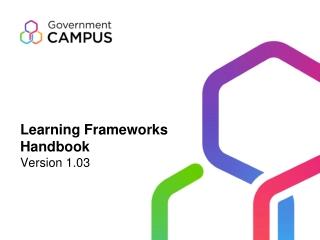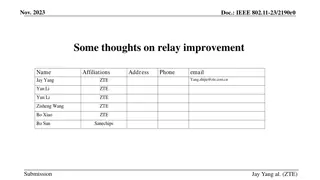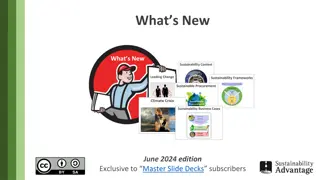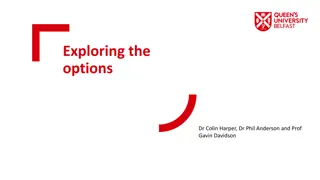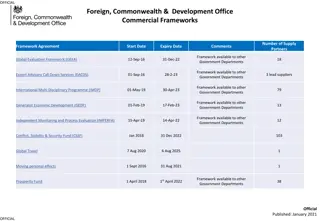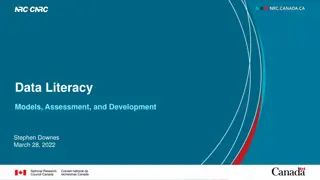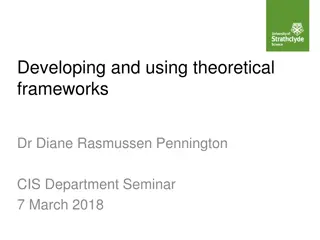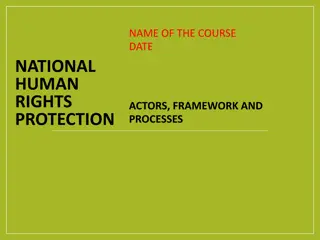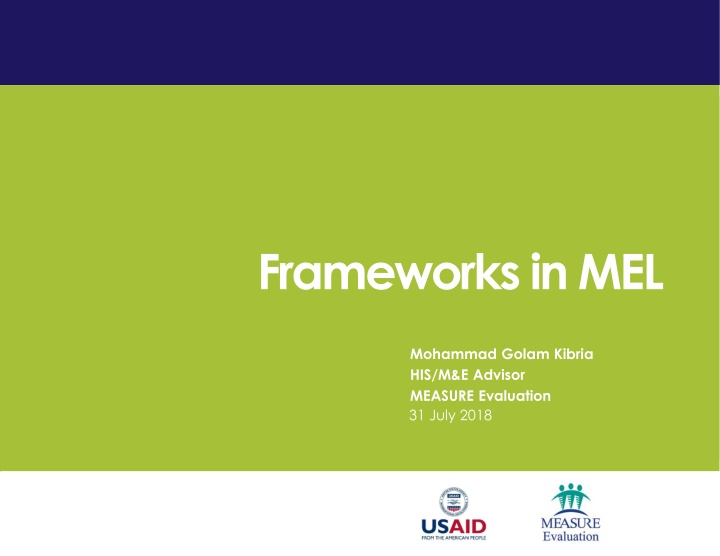
Frameworks in Monitoring and Evaluation (M&E)
Explore the functions, types, and significance of frameworks in M&E processes. Learn about conceptual frameworks, logic models, and results frameworks essential for program planning and evaluation.
Download Presentation

Please find below an Image/Link to download the presentation.
The content on the website is provided AS IS for your information and personal use only. It may not be sold, licensed, or shared on other websites without obtaining consent from the author. If you encounter any issues during the download, it is possible that the publisher has removed the file from their server.
You are allowed to download the files provided on this website for personal or commercial use, subject to the condition that they are used lawfully. All files are the property of their respective owners.
The content on the website is provided AS IS for your information and personal use only. It may not be sold, licensed, or shared on other websites without obtaining consent from the author.
E N D
Presentation Transcript
Frameworks in MEL Mohammad Golam Kibria HIS/M&E Advisor MEASURE Evaluation 31 July 2018
Learning Objectives Describe functions of frameworks in MEL Describe results frameworks
Functions of Frameworks Roadmaps to program planning, monitoring, and evaluation Draw out clear pathways to program goals and objectives Define relationships among program inputs, processes, outputs, outcomes, and impact Describe how program factors interact with external context (environmental factors) Lead to sound implementation and M&E plans
Conceptual Types of Frameworks Conceptual Framework Log Model Results Framework Logic Model Results Framework Theory of Change This Photo by Unknown Author is licensed under CC BY-SA
Summary of Framework Type of framework Brief description Program management Basis for monitoring and evaluation Conceptual framework Establish causal pathway and interaction of program and environmental factors Determine which factors the program will influence No, but can help to explain results Logic model Shows logical flow of inputs, process, outputs, outcome, impact Helps in determining key program elements to be tracked Yes, at all stages of the program from inputs to process to outputs to outcomes Results framework Logically linked program objectives Shows the logical relationship between program goal, objectives and sub-objectives Yes, at the objectives level Theory of change Combines elements of a conceptual framework and logic model Shows the causal relationship between activities, outcomes, and impact; and with external factors Yes, at all stages of program
Results Framework Definition A tabular/graphic description of a program s strategy for achieving a specific strategic objective (SO) through intermediate results, with a narrative supplement Purpose Like a logic framework, a results framework is a planning & management tool for programs Specifies exactly how, through a set of intermediate results, the program s SO will be achieved Provides a basis of consensus for all program stakeholders Conveys the development hypothesis plausible linkages between the intermediate results and the SO 1USAID, Performance Monitoring and Evaluation TIPS: Building a Results Framework, PN-ACA-947
Results Framework Components Strategic objective The ultimate end point of the results framework the goal of the program Standard by which the operational unit (performance) is willing to be judged Appropriate level of ambition means the SO should be achievable, clear, and measurable Intermediate results Achievable in the short term; lower level than SO An intermediate step leading to achieving the SO Lower level of impact than the SO; cumulative effect leads to the SO 1USAID, Performance Monitoring and Evaluation TIPS: Building a Results Framework, PN-ACA-947
This presentation was produced with the support of the United States Agency for International Development (USAID) under the terms of MEASURE Evaluation cooperative agreement AID-OAA-L-14-00004. MEASURE Evaluation is implemented by the Carolina Population Center, University of North Carolina at Chapel Hill in partnership with ICF International; John Snow, Inc.; Management Sciences for Health; Palladium; and Tulane University. Views expressed are not necessarily those of USAID or the United States government. www.measureevaluation.org


